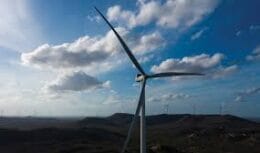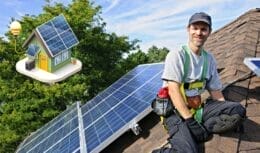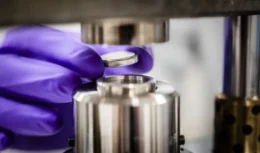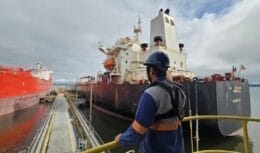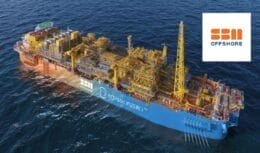
With a focus on reducing the carbon footprint of national mining — with an eye on the future competitiveness of production, Chile sets an ambitious goal: to produce the cheapest green hydrogen in the world in ten years
The H2 Chile association ensures that the country is on track to meet the first target of reaching 5 GW of electrolysis capacity under development by 2025 and, if these signs continue, by 2050 the export of this energy would account for more than 10% of GDP . Within the scope of COP26, the relevance of green hydrogen as a vector for decarbonizing different productive and service sectors around the world stands out.
Read also
- Another record for the Brazilian oil giant: with 104 operations in November, Petrobras LNG Regasification Terminals break the annual transshipment record
- Operation of the National Oil and Gas Agency prohibits gas stations in São Paulo; fines can reach R$ 5 million in addition to suspension of operation
- Operation of the National Oil and Gas Agency prohibits gas stations in São Paulo; fines can reach R$ 5 million in addition to suspension of operation
- Petrobras needs to increase the price of gasoline by 6%, to eliminate the gap between the price of fuel in the country and its international quotation

“Our goal is to have 5 GW of electrolysis capacity under development by 2025, to produce the cheapest green hydrogen on the planet by 2030 and to be among the top three exporters by 2040,” says Chilean Mines and Energy Minister Juan Carlos Jobet , in an interview with epbr.
Government of Chile will invest 330 billion dollars by 2050 in its National Green Hydrogen Strategy
The Government of Chile, aware of this, launched in November 2020 its National Green Hydrogen Strategy which “will require an accumulated investment of 330 billion dollars by 2050” and which aims “that Chile's exports to other economies exceed copper exports , in addition to 10% of GDP”. Highlights for Andrea Moraga Paredes, Executive Director of H2 Chile and Executive Director of Continuous Soluciones SpA.
Chile provides details on green hydrogen (H2V) projects being undertaken in Chile and what state the country is in to reach its long-term goals, one of which is to produce this fuel at the lowest market prices by 2030: 1,3 .XNUMX dollars per kilo.
In August of this year, the portfolio of green hydrogen projects in Chile tripled compared to November 2020, from 20 to 60 projects.
In September, construction began on HIF's Haru Oni project – the first green e-fuel project
It should be noted that there are currently two plants producing green hydrogen molecules in Chile. The first since 2017: the hybrid solar photovoltaic, batteries and hydrogen plant, from Enel Green Power and Enap, located in the Antofagasta region, this Power-to-Power system feeds the electrical requirement of the Cerro Pabellón field.
The other in August this year, with the opening of the Anglo-American plant, which consists of a Mobility Power system to power H2V forklift cranes at a mining site.
In September of this year, construction began on HIF's Haru Oni project, which is the first hydrogen-based green electronic fuel project in Chile, and is located in the Magallanes region. This project brings together the public and private sectors, and Chilean and foreign entities.
The owner of the factory is the Chilean HIF, and has the support of Enap, the German Siemens and Porsche, the Italian Enel Green Power and Gasco, among other companies. The forecast is that this plant will start operating in 2022.
Other large green hydrogen projects in Chile backed by global giants such as Engie and Enaex
Another project that was launched in September this year is the H2GN project, promoted by Gasvalpo and whose technological partner is the Busso group.
This initiative seeks to inject green hydrogen into the natural gas distribution networks that the company has in the Coquimbo Region, replacing up to 20% of the use of natural gas, reaching more than 1.800 homes in the cities of Coquimbo and La Serena. It is expected to enter into operation in the first half of 2022.
In addition, the HyEx project, led by the companies Engie and Enaex, in the Antofagasta region, which seeks to generate green ammonia for explosives locally and for export, has already entered the assessment system through an Environmental Impact Statement (EIS) in September .
The Hydra project led by CSIRO, Mining3, Engie and which has corfo financing, is also advancing in the implementation of the cargo train, on a pilot scale, for a CAEX truck, and is already in the preparation phase of field tests of system operation in real operating conditions.

